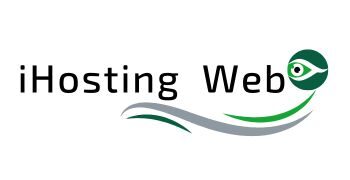Let me guess: you launched a template site, checked a few boxes, and hoped it would start pulling in leads, yet it feels like the online equivalent of a store with the lights on and no one inside, right; here is the hard truth I learned building and rebuilding brands for years—when it comes to websites designing, templates are a starting point, not a strategy, and the gulf between a pretty theme and a profit engine is the difference between a brochure and a business, because growth online demands alignment among brand, content, user experience (UX) [user experience (UX)], search engine optimization (SEO) [search engine optimization (SEO)], performance, and measurement that a cookie-cutter build simply does not provide; so today, I will walk you through why one-size-fits-all sites stall, what custom design fixes, and how iHosting Web, LLC (limited liability company) pairs creative, technical, and marketing muscle to turn your website into a 24/7 sales asset that compounds results month after month.

Templates vs. Traction: Why “Good Enough” Isn’t Enough
Cookie-cutter sites look fine on launch day, but growth stalls because they are built around constraints that ignore your model, your customers, and your long-term goals, and that matters because visitors judge credibility in milliseconds while search engines weigh speed, structure, and relevance to decide who deserves page one, which means a generic layout, stock language, and slow shared hosting form invisible friction that reduces conversions, kneecaps campaigns, and hides your expertise; meanwhile, your competitors who invest in brand-specific messaging, task-focused navigation, and performance-first engineering accrue advantages like higher engagement, lower acquisition costs, and stronger keyword coverage that reinforce each other, compounding like interest; if your measurement shows high bounce rates, shallow time on page, and weak conversion paths, you are seeing a symptoms list that templates rarely overcome because they were never designed around your offer, your objections, your proof points, or your sales motions in the first place.
| Aspect | Template Site | Custom Design |
|---|---|---|
| Brand Fit | Generic visuals and tone; limited flexibility | Bespoke identity, narrative, and art direction mapped to audience |
| Speed and Stability | Heavy theme code; shared hosting bottlenecks | Lean code, image strategy, secure, managed hosting |
| Conversion Flow | One-size forms; unclear paths to value | Task-based journeys, persuasive microcopy, A/B (split) testing |
| Search Visibility | Basic search engine optimization (SEO) [search engine optimization (SEO)] checkboxes | Semantic architecture, schema, topical authority content |
| Integrations | Limited plug-ins | Purpose-built integrations with customer relationship management (CRM) [customer relationship management (CRM)] and other essential tools |
| Scalability | Rigid layouts; quick to outgrow | Component library that scales offers, products, and campaigns |
Websites Designing: What It Gets Wrong and How To Fix It
Most advice around websites designing centers on surface polish—colors, fonts, hero images—while the real growth levers are structural, strategic, and measurable, which is why we start not with a moodboard but with positioning, voice-of-customer research, and a conversion map that ties every page to a goal, because design is communication and every pixel should work for a reason; we combine this with a performance baseline, compressing assets, deferring scripts, and leveraging content delivery networks (CDN) [content delivery network (CDN)] and secure sockets layer (SSL) [secure sockets layer (SSL)] to ensure speed and trust, while a modular content management system (CMS) [content management system (CMS)] gives your team the power to launch campaigns in hours, not weeks; then we layer search engine optimization (SEO) [search engine optimization (SEO)] architecture, from topic clusters to internal links, so that your authority compounds as you publish, and we implement event tracking so your decisions are guided by evidence, not guesses.
Watch This Helpful Video
To help you better understand websites designing, we’ve included this informative video from Flux Academy. It provides valuable insights and visual demonstrations that complement the written content.
- Define 1–3 primary user jobs and map pages to those tasks.
- Craft message hierarchy: promise, proof, path—above the fold.
- Ship fast first, then iterate with A/B (split) tests and heatmaps.
- Automate follow-ups through your customer relationship management (CRM) [customer relationship management (CRM)] to shorten sales cycles.
The Compounding Return on Investment of Custom Design

Custom work feels slower at the start, yet it accelerates outcomes because each improvement has second-order effects—clarity reduces bounce, speed lifts rankings, proof boosts trust, and together they raise conversion rate while lowering cost per acquisition, and that is the compounding return on investment (ROI) [return on investment (ROI)] you can bank on; across client cohorts, we routinely see first 90-day gains such as 20 to 40 percent faster load times, 15 to 30 percent higher organic impressions, and 25 to 60 percent increases in qualified form fills once friction is removed and offers are sharpened, which is why your website is not a cost center but an asset with yield; if you are running paid media like pay-per-click (PPC) [pay-per-click (PPC)], these changes often reduce cost per lead because quality scores rise, and if you sell products online, improvements to product pages, checkout clarity, and trust badges can lift add-to-cart and completion rates without a single extra ad dollar.
Imagine a simple funnel sketch: At the top, Traffic splits into Organic, Paid, and Referral; in the middle, Value Proposition and Social Proof filter visitors into Product or Services paths; at the bottom, Conversion lifts with Clear CTA (call to action) [call to action (CTA)], Fast Checkout, and Follow-up Automation.
| Metric | Before | After | Why It Moves |
|---|---|---|---|
| Page Load (Seconds) | 4.5 | 2.2 | Lean code, image strategy, content delivery network (CDN) [content delivery network (CDN)] |
| Bounce Rate | 62% | 42% | Clear value above the fold, faster first contentful paint |
| Organic Click-through Rate | 2.1% | 3.4% | Improved titles, meta descriptions, and schema |
| Form Conversion Rate | 1.9% | 3.6% | Shorter forms, contextual proof, frictionless call to action (CTA) [call to action (CTA)] |
| Cart Completion | 48% | 61% | Trust signals, simplified steps, guest checkout |
What a Full-Service, Custom Digital Presence Looks Like With iHosting Web, LLC
iHosting Web, LLC (limited liability company) is a website design and hosting digital agency that pairs creative direction with engineering and growth strategy, and we build systems, not just sites, meaning your brand, website development, digital marketing, and hosting stack work together as a revenue machine; our team designs user interfaces (UI) [user interface (UI)] and user experiences (UX) [user experience (UX)] that reflect your positioning, implements secure, managed hosting solutions to keep load times snappy under traffic spikes, and provides performance monitoring and dashboards so you can inspect performance in real time; for product companies, we craft product pages and merchandising, and for service businesses, we engineer lead paths that move visitors from awareness to booked calls with nurturing via your customer relationship management (CRM) [customer relationship management (CRM)], email, and remarketing, while site maintenance plans keep everything secure, updated, and fast so your team can focus on growth rather than firefighting.
- Custom Website Design: Brand systems, content strategy, component libraries.
- Website Development: Accessible, performant builds with future-proof architecture.
- Digital Marketing: Brand marketing, social media optimization, and content.
- Secure Hosting Management: Security, backups, and uptime guarantees.
- Mobile Application Design: Native and hybrid mobile solutions aligned to web presence.
- Site Maintenance Plans: Monitoring, updates, and continual optimization.
| Service | Primary Outcome | Secondary Benefit |
|---|---|---|
| Custom Website Design | Higher conversion rate through clear narratives | Brand recognition and pricing power |
| Website Development | Speed and accessibility for all users | Lower maintenance and technical debt |
| Digital Marketing | Qualified traffic growth | Audience insights and message-market fit |
| Hosting Management | Reliability during peak demand | Security and compliance confidence |
| Mobile Application Design | Expanded mobile engagement | Improved retention and native experience |
| Site Maintenance | Zero-day patching and uptime | Peace of mind and focus on growth |
Real Stories: From Cookie-Cutter to Category Leader

A regional service firm came to us with a drag-and-drop site that looked fine but converted at 1.2 percent, and after customer interviews, we reframed the offer, clarified pricing tiers, and redesigned the booking flow with a stronger call to action (CTA) [call to action (CTA)], which lifted conversion to 3.1 percent in 60 days while organic leads doubled as search engine optimization (SEO) [search engine optimization (SEO)] content addressed real objections; an online retailer selling niche wellness products had slow product pages and a confusing checkout, so we rebuilt templates with lean code, integrated a content delivery network (CDN) [content delivery network (CDN)], refined product copy with structured data, and reduced the steps to purchase, which raised revenue per visitor by 28 percent and cut return requests with clearer expectations and visuals; names aside to protect confidentiality, the throughline is predictable—when your site aligns what you say, how fast you say it, and how easy it is to act, results stack up like clockwork.
How To Choose the Right Partner and Plan Your Next 90 Days
Select a team that asks hard questions about your market, margins, and model before they talk pixels, because design only drives growth when it is tethered to business math, and that means scoping around outcomes, not features; evaluate their hosting approach, integration chops, and measurement practices, ask for examples of event tracking and reporting that tie back to qualified pipeline, and ensure accessibility and inclusivity are non-negotiable so every visitor can navigate and convert; then frame the first 90 days as a sprint toward clarity and speed—positioning and architecture in weeks one and two, design and development in weeks three to six, content and migrations in weeks seven and eight, launch with measurement in week nine—so that you can learn fast, iterate with evidence, and avoid the drag of never-ending redesigns.
- Week 1–2: Strategy workshop, message hierarchy, site map, and measurement plan.
- Week 3–4: Wireframes, user interface (UI) [user interface (UI)], and copy drafts for key pages.
- Week 5–6: Build accessible components, performance tuning, staging reviews.
- Week 7–8: Content migration, redirects, technical search engine optimization (SEO) [search engine optimization (SEO)] checks.
- Week 9: Launch, monitor, and A/B (split) test top call to action (CTA) [call to action (CTA)].
| Line Item | Typical Range | Primary Impact |
|---|---|---|
| Custom Website Design and Build | $8k–$40k+ | Conversion rate lift, brand clarity |
| High-speed Hosting | $50–$400/month | Speed, reliability, security |
| Content and search engine optimization (SEO) [search engine optimization (SEO)] | $1k–$6k/month | Compounding organic traffic |
| Site Maintenance Plan | $150–$800/month | Uptime, updates, and peace of mind |
Your Next Best Step: Make the Website Work Harder Than You Do
If you want a site that sells while you sleep, your path is not another theme—it is a custom, full-service approach where design, content, performance, measurement, and hosting are engineered to support your goals, and that is precisely what iHosting Web, LLC (limited liability company) delivers by blending Custom Website Design, Website Development, Brand Marketing and Social Media Optimization, Secure Hosting Management, Mobile Application Design, and Site Maintenance Plans into a single growth system; the first win is clarity about who you serve and why you win, the second is speed that keeps people on the page, and the third is conversion flows that remove doubt and make action obvious, so your acquisition gets cheaper as your lifetime value rises, and yes, that is how you build optionality into your business; ready to trade random acts of marketing for a repeatable engine and finally take control of websites designing with a partner who treats your goals like their own.
Custom design turns your site from a static brochure into a compounding growth engine that attracts, persuades, and converts.
Imagine the next 12 months with faster pages, clearer messaging, and a pipeline that feels steady instead of spiky, because your digital presence finally works together.
What could your team achieve if you rethought websites designing as a system that aligns brand, technology, and measurement to drive momentum every week?
Fuel Growth With iHosting Web, LLC Custom Website Design
For small and midsize teams, Providing a full-service, customized digital presence—combining web design, branding, hosting, and strategic digital solutions—to ensure businesses can achieve their long-term growth and revenue goals.
